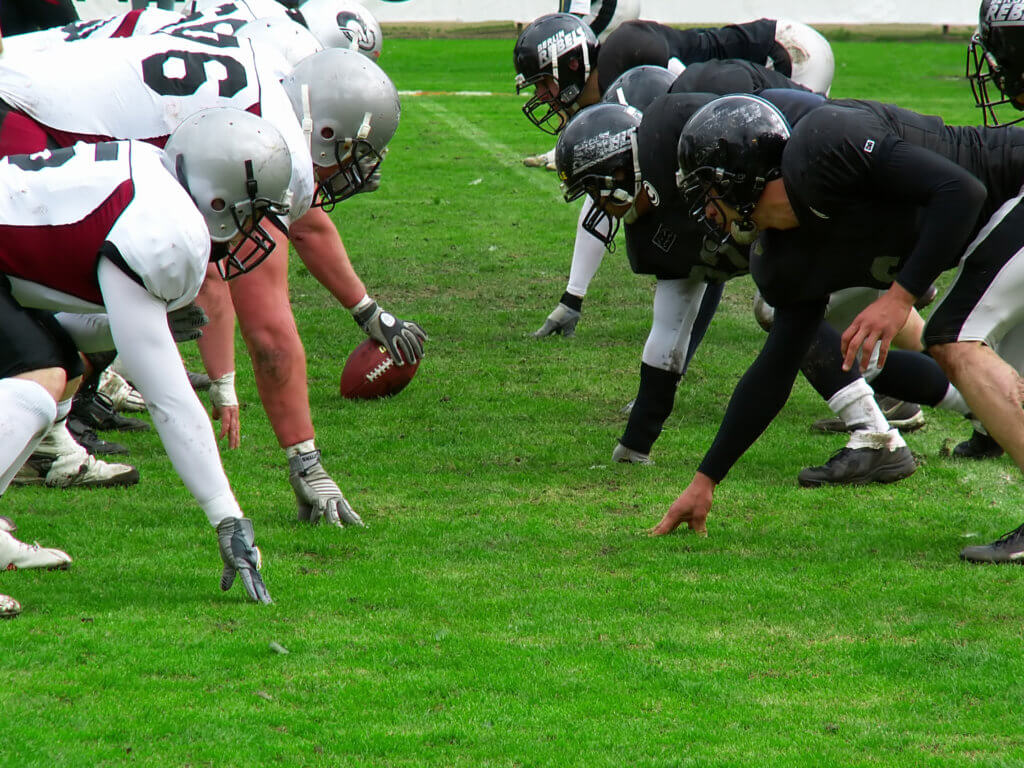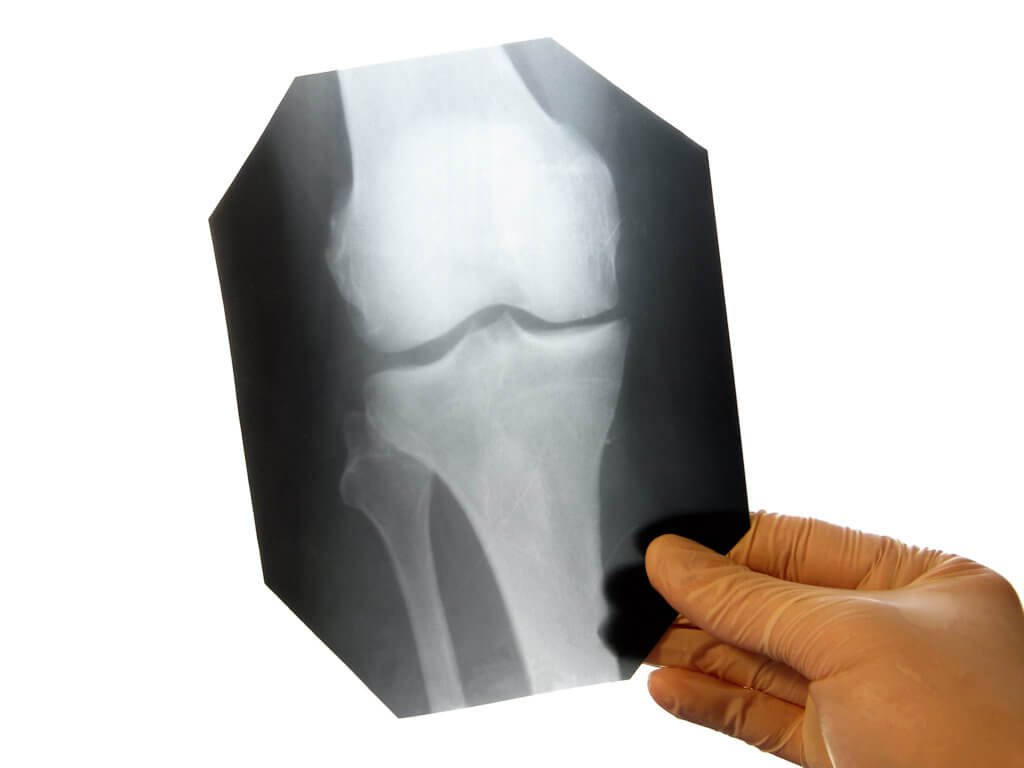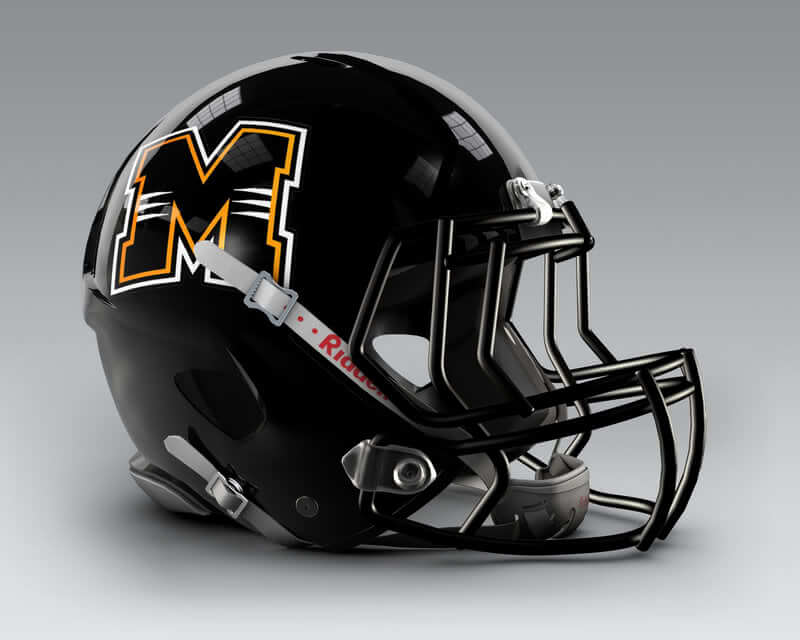It’s that time of year — the kids are back in school, pumpkin spice is starting to spread into stores, and football season has begun. So it’s a good time to remind parents and coaches of some of the more common injuries that football players can sustain, and some ways to perhaps avoid them.

The speed and contact inherent in football make it a relatively high-risk sport, says Mark Salandra, CSCS, who coached both of his sons through peewee football and watched one play at the high school level. It leads all other youth sports in the number of injuries per year. A certified strength and conditioning specialist and the founder of StrengthCondition.com, a Physiquality partner, Mark knew what injuries to look for when his sons were on the field. He says there are several types of injuries that parents and coaches should watch for:
Knee injuries
The ligaments of the knee — the ACL (anterior cruciate ligament), MCL (medial collateral ligament) and PCL (posterior cruciate ligament) – are all susceptible to injury in football, often caused by hits from other players. (A player at the University of Illinois has torn his ACL three times during his five-year career at the U of I.) Some players also tear the meniscus, the cartilage that separates the femur from the lower leg bones, when they plant a foot to rotate their body and the knee twists.

Ankle sprains and strains
Mark explains that these pivoting movements and changes in direction in football make players susceptible to soft tissue damage in the ankle as well. Ankle pain could mean a sprain or strain, necessitating time off the field to recuperate. Players should also be aware of Achilles tendonitis, which can lead to the Achilles tendon rupturing; it also presents as ankle pain in the back of the ankle, where it attaches to the calf.
Shoulder injuries
Direct hits to the shoulder can cause the joint to dislocate or separate. Players can also suffer rotator cuff injuries from contusions to full tears. And frequent throwing, particularly by quarterbacks, can lead to tendonitis in the shoulder.
Concussions and brain injury

Anyone involved with football should be aware of the research that has been done in the last couple of decades on the risk of concussions in football. Coaches should reinforce the fact that once a player suspects he has a concussion, or the coach witnesses a possible concussion, the athlete should stop playing immediately. And parents should remember that while hard hits and major concussions are worrisome, so are repeated minor blows to the head, which can lead to chronic traumatic encephalopathy, or CTE.
Parents should also keep an eye on how frequently practices and games are held, and how hot it is outside when players are training and playing. As with any sport, football players are prone to overuse injuries. Players should be vocal about any chronic or recurrent pain, as it could be the sign of overuse and the need for rest. And, especially in the Midwestern and Southern states, high temperatures and outdoor practices, particularly in full pads, can lead to illness and even death. Players and coaches should work together to make sure everyone is hydrated and taking frequent breaks from the heat.
So how can parents and coaches make the sport safer for athletes? Mark recommends a strength training program for football players, starting up to 12 weeks before the football season begins. The program should emphasize conditioning, including agility drills and sprints; proper weight training, with someone that can teach the correct form; and building bone density and increasing reaction time. Being able to react more quickly, he says, helps the brain work faster during a game and may help an athlete avoid impact with another player, reducing the chance of injury.

Mark also emphasized that rest should be a key component of any athlete’s training program. “It is only after your workout, when you are resting and replenishing your body with protein and other nutrients, when the body heals and gets stronger. This is why I live by the motto, ‘Train hard, but rest harder,’” he notes.
Your local Physiquality physical therapist is an excellent resource for athletic training and injury prevention. Use our therapist finder below to locate the professional nearest you.
Thank you to our contributors:

Mark Salandra, CSCS, is the founder of StrengthCondition.com, one of Physiquality’s partner programs. Mark educates and trains athletes young and old in strength and conditioning, with the goals of better fitness and lower rates of injury.
Hart, Ariel. Kids’ concussions prompt CDC advice for sports, schools, parents. Atlanta Journal-Constitution, September 4, 2018.
Fornelli, Tom. Illinois receiver Mike Dudek suffers third season-ending knee injury of his career. CBS Sports, September 3, 2018.
Arms, Earl. Heat, dehydration top of mind for football coaches, players. WAPT News (Jackson, MS), July 25, 2018.
Bartolotta, Devin. UMD football player’s death caused by heatstroke. CBS Baltimore, July 17, 2018.
Physiquality.
- Strength training for kids and adolescents. July 9, 2018.
- Why rest is an important part of your exercise regime. February 15, 2013.
Resnick, Brian. What a lifetime of playing football can do to the human brain. Vox, April 30, 2018.
Boren, Cindy. A new study shows that hits to the head, not concussions, cause CTE. Washington Post, January 18, 2018.
Arthur, Kenneth. The Achilles heel of pro footballers… literally. Ozy, April 26, 2017.
Marx, Robert. ACL injuries in football players. The Hospital for Special Surgery, November 27, 2016.
Gibbs DB et al. Common shoulder injuries in American football athletes. Current Sports Medicine Reports, September-October 2015.
STOP Sports Injuries.
“Milwaukee Panthers Football Helmet” by Illwauk is licensed under CC BY-SA 3.0